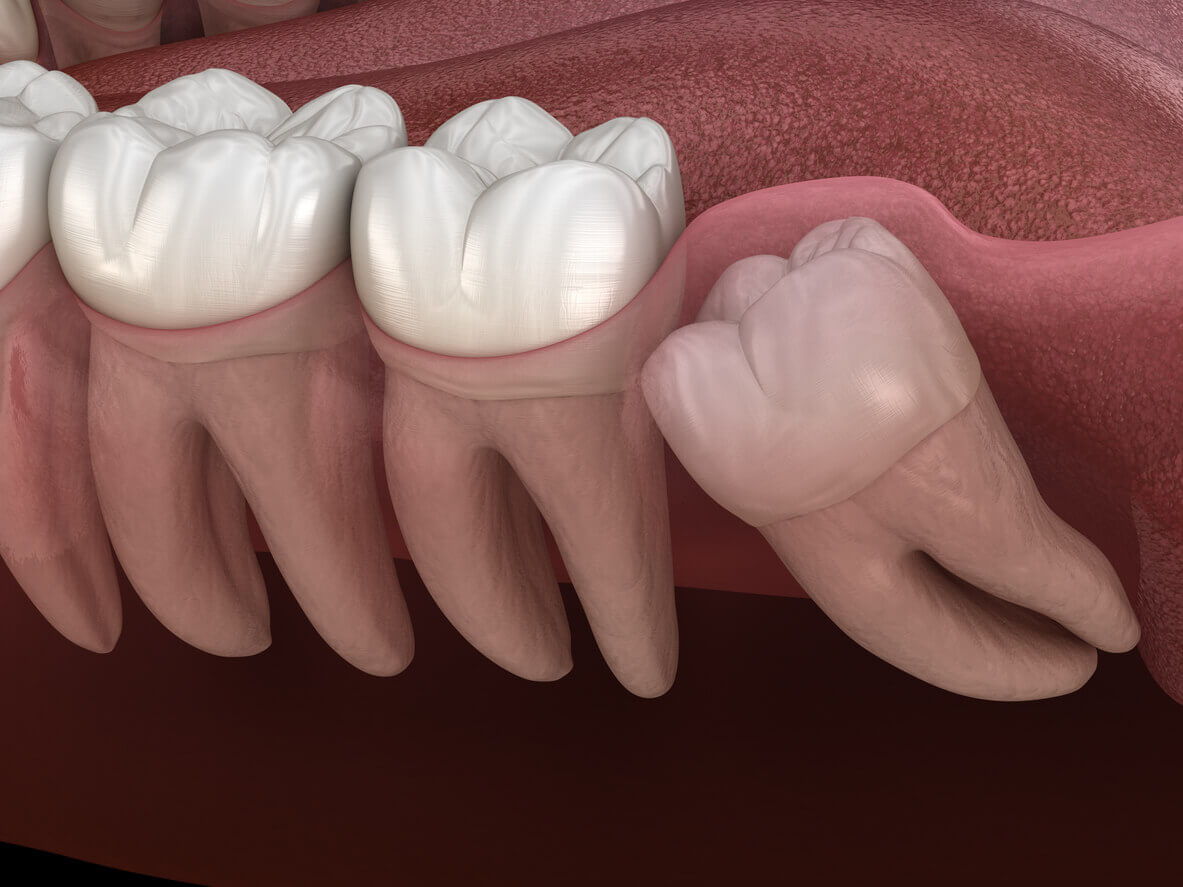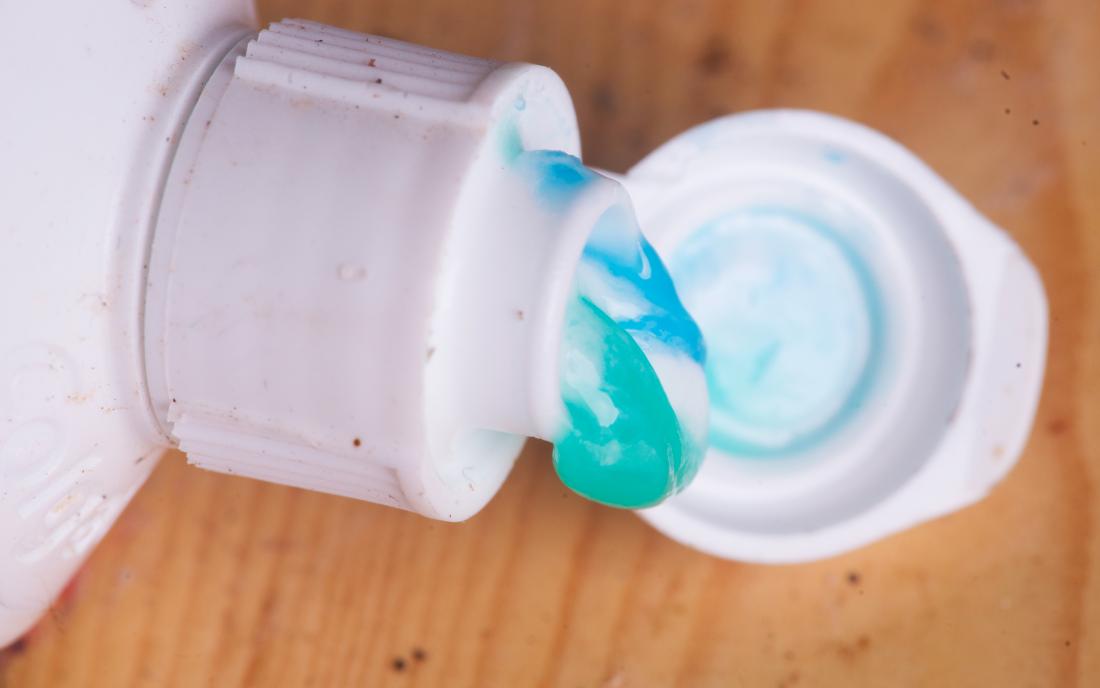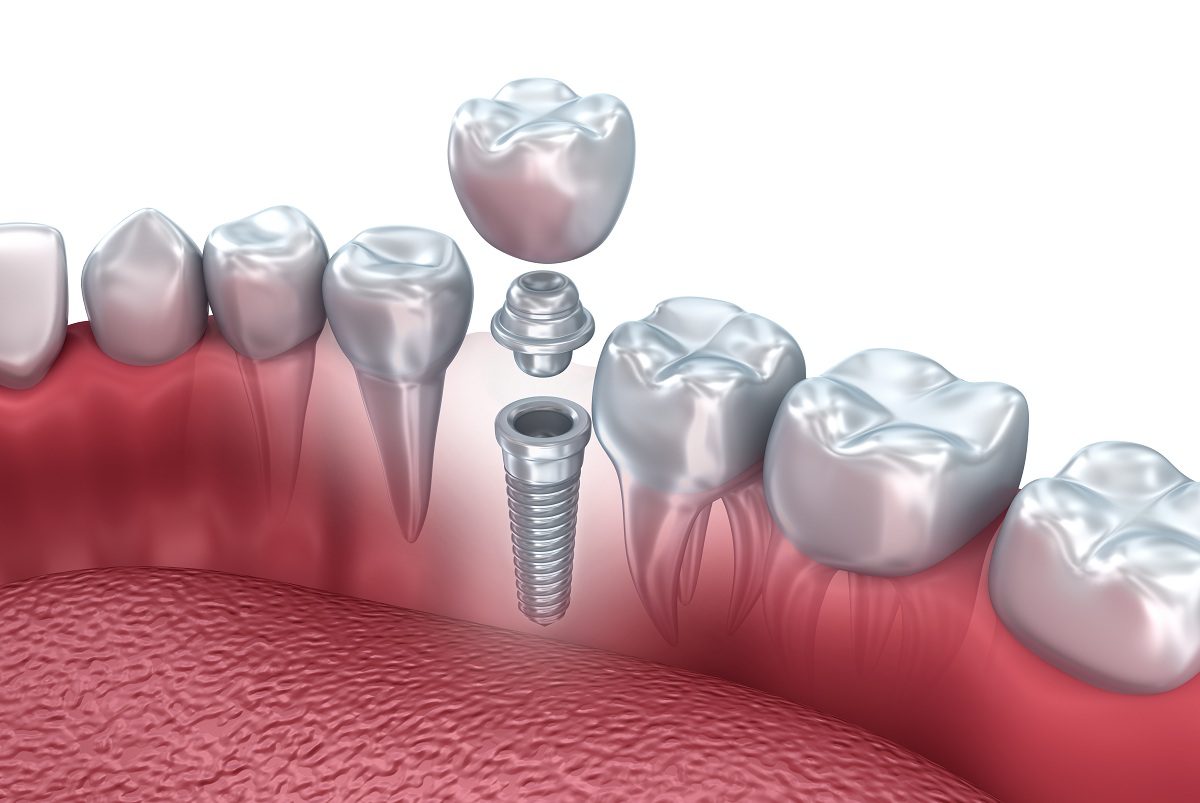A hole near your wisdom tooth can be caused by different things, like the tooth coming in, gum problems, or infections. It’s important to see a dentist for an evaluation and the right treatment.
However, ignoring the issue can lead to more problems like gum disease progressing from gingivitis to periodontitis, which can cause tissue and bone loss and create pockets or holes between the teeth and gums. Bacterial and viral infections can also be factors.
To keep your oral health in check, it’s best to get professional advice and treatment as soon as possible.
Here, you’ll see why you might have a hole near your wisdom tooth, what signs to look for, and how to get it fixed. This will help you understand what’s going on and how to take care of it.
What Does This Dental Issue Look Like?
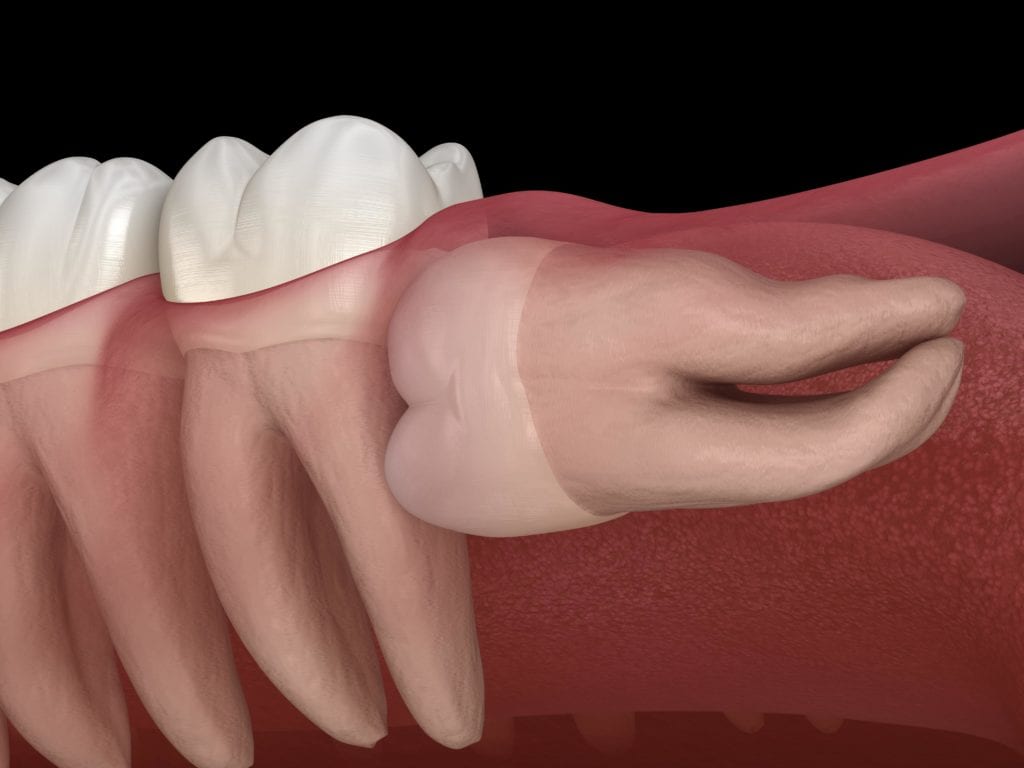
This dental issue looks like a dark hole in the gums, typically behind your back molar. The hole doesn’t appear truly black, but it can seem dark because it’s hard to see due to its location. It varies in size depending on how your wisdom tooth has grown.
In addition, this hole can be in your upper or lower jaw, as most people have four wisdom teeth, one in each corner of their mouth. It’s usually easier to spot it in the lower jaw when looking in the mirror compared to the upper jaw.
What Can Lead to the Formation of Holes in the Gums or Gumline?
Let’s explore the various factors that can give rise to holes in the gums, along with their characteristics and associated symptoms.
Periodontitis: It represents an advanced stage of gum disease, initiated by the accumulation of plaque on teeth. This plaque primarily consists of bacteria that metabolize dietary sugars for energy. However, the byproducts of this process can irritate the gums, causing inflammation and easy bleeding, a condition known as gingivitis.
Additionally, if this inflammation progresses deeper into the gum tissue and affects the underlying bone, it evolves into periodontitis. The American Dental Association reports that 47.2 percent of adults over 30 in the United States are affected by periodontitis.
Types:
- Chronic Periodontitis: This gum problem worsens over time and can lead to a hole in the gums, eventually resulting in tooth loss.
- Aggressive Periodontitis: This type of gum tissue develops rapidly and can cause the gums to detach from the teeth.
- Necrotizing Periodontal Disease: Linked to systemic conditions like HIV, this condition causes gum tissue cells to die, creating empty spaces. A rare form of gum disease, it appears suddenly and is more common in people with weakened immune systems. It can cause gum tissue to appear with holes or ulcers, sometimes covered by a white or yellow layer.
Infections: They are often triggered by viruses or bacteria, can also give rise to gum holes. An example is herpetic gingivostomatitis, caused by the herpes simplex virus (HSV). While this condition typically occurs in children who’ve recently contracted HSV, it can occasionally manifest in adults.
Herpetic gingivostomatitis leads to the development of lesions, including those on the gums. These lesions may appear concave or crater-like and could progress to form ulcers.
Open Tooth Socket: A hole in the gums can emerge from an open tooth socket, a common occurrence following a tooth extraction. Over time, this “hole” heals, filling with bone approximately 8 weeks after the extraction.
Post-extraction pain and swelling are normal. It’s vital not to disturb the healing area excessively, as excessive disruption may lead to a dry socket—a painful condition exposing the nerve and bone within the healing tooth socket.
Quicks Fact:
- Wisdom teeth, also called third molars, usually show up in your mouth between the ages of 17 and 25.
- A hole behind a wisdom tooth can be called a distal wedge or enamel pearl.
- Sometimes, after wisdom teeth extraction, you might get painful dry sockets or alveolar osteitis if the blood clot doesn’t form or comes loose.
- One way to fill the hole behind a wisdom tooth is by using tooth-colored dental composite material.
- It’s important to visit the dentist regularly and take good care of your oral hygiene to prevent problems like tooth decay, gum infections, or abscesses related to these holes.
Recognizing Signs of Gum Problems
If your gums have a hole, they might show the following signs:
- Bleeding when you brush or floss.
- Yellow or white patches over the affected area.
- Severe pain.
- Fever.
- Swollen lymph nodes.
- Spontaneous bleeding.
- It might feel like a gap when you touch it with your tongue.
- Food can get stuck in the gap.
- The gap may have a bad smell.
- The area around the gap may be red and swollen.
- You might have occasional pain in that area.
- You could also experience jaw pain on that side.
For gum infections, you may notice:
- Mouth sores.
- Fever.
- Not wanting to eat.
- Feeling tired.
- Being irritable.
- Swollen and red gums.
How to Eliminate the Gap in Your Gum Behind the Molar?
To address the issue of a gap in your gum behind the molar, the primary solution involves removing the underlying cause, which is often an erupting wisdom tooth. This means you should promptly schedule an appointment with your dentist for a wisdom tooth extraction. No home remedy can make a wisdom tooth disappear, so extraction is the only permanent solution.
What to Anticipate During Your Wisdom Tooth Removal Procedure?
Given that the wisdom tooth is mostly impacted and not readily visible in the hole in your gums, your general dentist is likely to refer you to an oral surgeon for the extraction. The extraction procedure for this situation is more complex compared to one involving a fully erupted tooth, as the gums conceal the entire tooth. Here is how the procedure typically unfolds:
Application of Numbing Gel: The first step is to apply numbing gel, which helps prepare the area for the subsequent local anesthetic injection.
Injection with Local Anesthetic: Instead of novocaine, dentists commonly use Lidocaine for the local anesthetic, ensuring you don’t feel any pain during the procedure.
Incision to Open the Gums: To gain access and locate the wisdom tooth, your dentist will need to make an incision to open up the gums.
Bone Drilling: In cases where the tooth is deeply impacted and embedded in bone, the surgeon will need to drill away bone to expose the tooth.
Tooth Elevation: Using a specialized instrument, it is elevated by applying leverage to free it from its position.
Tooth Extraction: The surgeon then grasps the tooth with forceps and carefully removes it from your mouth.
Socket Irrigation: The hole left by the extracted tooth may contain debris and bone particles. Irrigation is performed to flush out this debris and rinse the socket thoroughly.
Stitches: As the gums are cut and opened during the procedure, stitches are used to close the hole securely.
Gauze Placement: Your dentist will instruct you on how to place gauze over the socket and apply biting pressure to help control bleeding.
Home Remedies to Ease Discomfort for a Gum Hole Behind the Molar
While home remedies won’t make the gum hole behind your molar disappear, they can help alleviate the associated pain and prevent inflammation. This condition allows food to easily become trapped, leading to discomfort, inflammation, and potential bleeding when brushing over it. To keep the hole clean and minimize these issues, consider the following home-care tips:
Brushing: Ensure you brush your teeth thoroughly for a minimum of two minutes, twice a day. The brushing action helps remove food particles, and it’s okay to gently brush over the hole to clear any surface debris.
Rinsing: Employ a mouthwash for vigorous gargling and swishing. Rinsing aids in dislodging food stuck in your mouth. Options include saltwater rinses, Listerine, or even coconut oil for oil pulling. Extending the rinsing duration increases the likelihood of food dislodgment.
Water Flosser: Traditional flossing may not effectively address the hole in your gums. Instead, utilize a water flosser to irrigate and flush out trapped food. Direct it into the hole and gently squirt water to cleanse it.
In addition, it is arguably the most effective way to clean the gum hole. However, it’s essential to have a clear view of the hole to accurately aim the flosser. If you cannot access the hole due to its location deep in your mouth, particularly with wisdom teeth, it may pose challenges for effective cleaning. These are situated at the farthest depths of your mouth, making the hole hard to access.
Tips for Preventing Gum Holes
To avoid the development of holes in your gums, adhere to the following guidelines:
- Maintain a daily routine of brushing and flossing, ensuring you do so at least twice a day. Be thorough when brushing your gums and employ floss to reach between your gum lines.
- Utilize toothpaste and other oral care products that have demonstrated benefits for gum health.
- Do not neglect professional dental cleanings; schedule them at least twice a year to ensure proper oral hygiene.
- Stay away from smoking, as it is detrimental to gum health.
- Limit your consumption of sugary foods.
Will the Hole in Your Gum Behind the Molar Disappear Naturally?
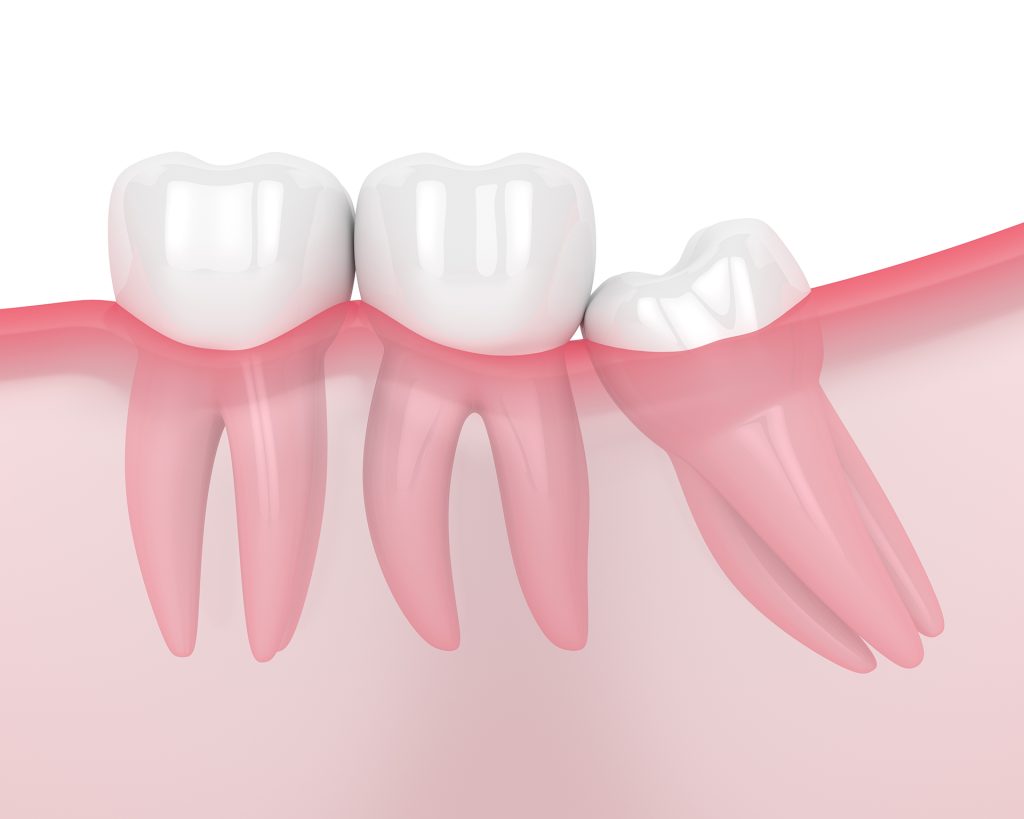
No, Regrettably, the hole in your gum behind the molar won’t naturally heal on its own due to its origin in an unerupted wisdom tooth. As long as the wisdom tooth remains in place, the hole will persist.
Further, it’s important to note that while the hole may not shrink, it can indeed grow larger. This enlargement can occur if the wisdom tooth is attempting to erupt and is not impacted. As it gradually emerges, the hole will expand in size.
This enlargement happens because the wisdom tooth within the hole may eventually breach the gumline. However, it’s crucial to understand that teeth do not reverse the process of eruption; they only become more exposed over time.
FAQ’s
Is It Normal to Have a Hole Where Your Wisdom Tooth Was?
Yes, it is normal to have a hole after a wisdom tooth extraction. This hole is the tooth socket, and it should close up within a few weeks. Taking care of the site to prevent infection is essential.
What is a Tooth Crater?
A tooth crater is a small depression on the tooth’s surface, caused by factors like acidic mouthwash, poor dental hygiene, tooth grinding, or erosion from acidic foods. Dentists can treat it with procedures like dental bonding or veneers.
What is a crater-like hole behind a wisdom tooth?
A crater-like hole behind a wisdom tooth is known as a blind cavity, often caused by plaque and tartar buildup, indicating a potential infection or gum disease.
How do you treat a crater-like hole behind a wisdom tooth?
Professional cleaning, like scaling and root planing, is the best treatment for a crater-like hole. In severe cases, wisdom tooth removal may be necessary.
Are there any long-term complications from a crater-like hole behind a wisdom tooth?
Yes, if left untreated, a crater-like hole can lead to complications such as abscesses and periodontal disease. Regular dental check-ups are recommended to address and treat any potential issues.
Why do I have a hole in my gum where my wisdom teeth are?
The hole is the tooth socket where the roots of the wisdom tooth were attached. While the bony anatomy may not fully fill the socket, the gum tissue should close it off over time.
Is a hole in gum serious?
Yes,If left untreated, a hole in the gum can lead to shifting teeth, loose teeth, and tooth loss. Periodontal disease should be promptly treated to avoid these complications.
Can a hole in your gum heal?
Yes, After a tooth extraction, a hole in the gums heals over time and fills with bone, usually within about 8 weeks. It’s important not to disturb the healing area.
Can a hole in a tooth at the gum line be fixed?
Yes, a dentist can fix a hole in a tooth at the gum line, but it’s essential to see a dentist promptly to determine the best treatment. Small cavities can often be filled.
Do wisdom teeth holes go away?
Yes, Wisdom tooth extraction holes naturally close if the blood clot in the socket isn’t disturbed. It typically takes a few weeks for the extraction site to look smoother and a few months for complete healing. Dental follow-up is advisable to ensure proper healing.
Final Words
To sum up, the presence of a hole in your gum near a wisdom tooth can result from various factors, including the eruption of the wisdom tooth, gum issues, or infections. Ignoring this issue can lead to more significant oral health problems, such as the progression of gum disease and potential tissue and bone loss, resulting in the formation of pockets or holes between the teeth and gums.
In addition, Seeking prompt evaluation and treatment by a dentist is essential to address the underlying cause and maintain good oral health. Remember that professional guidance is crucial in addressing this concern and preventing potential complications.







